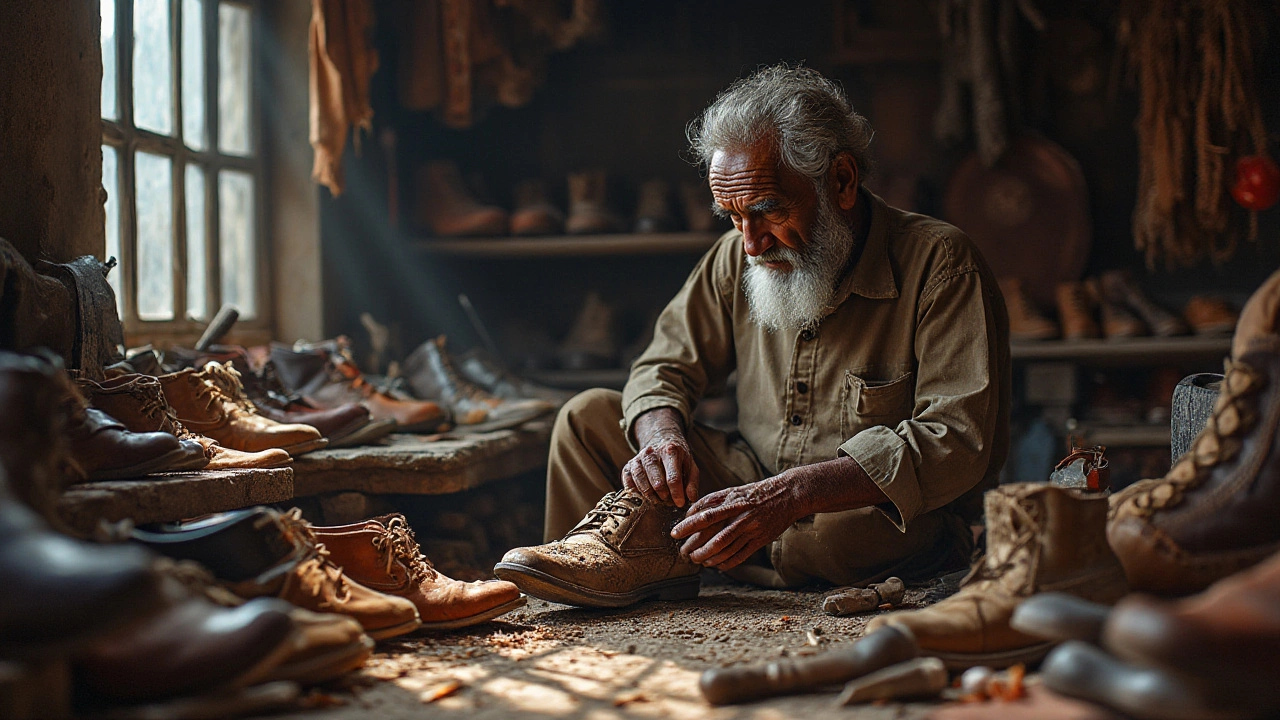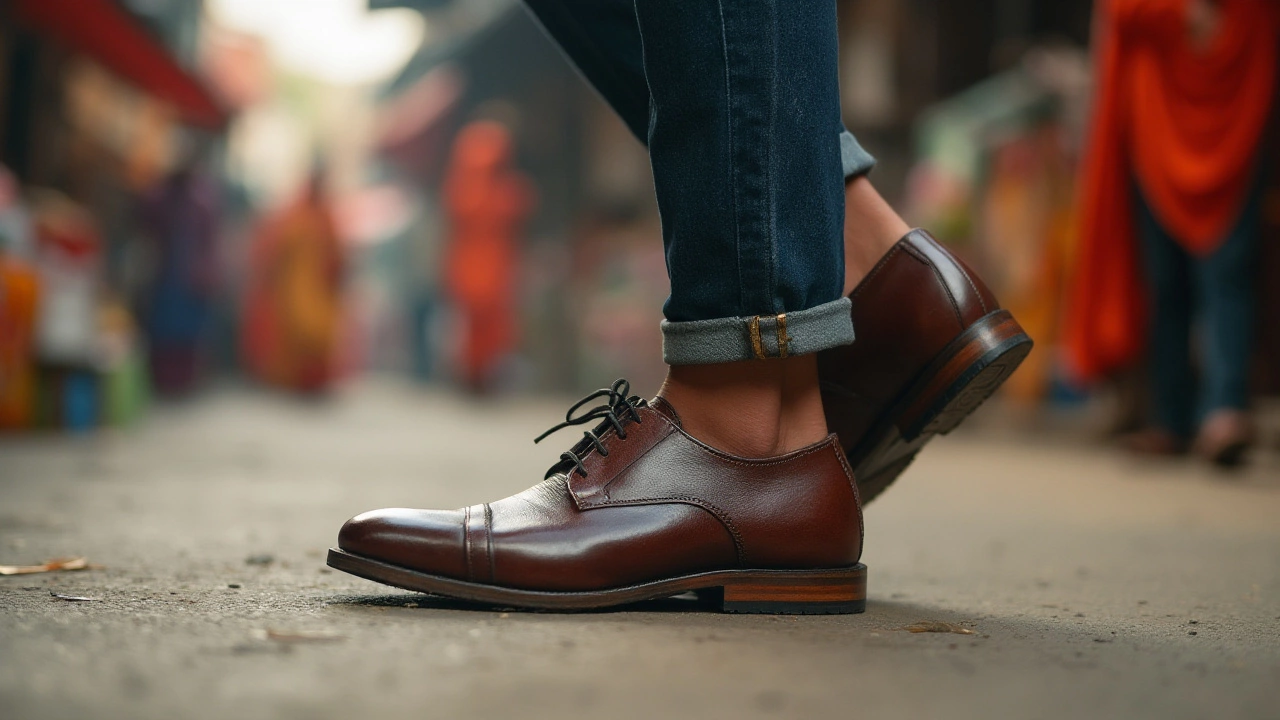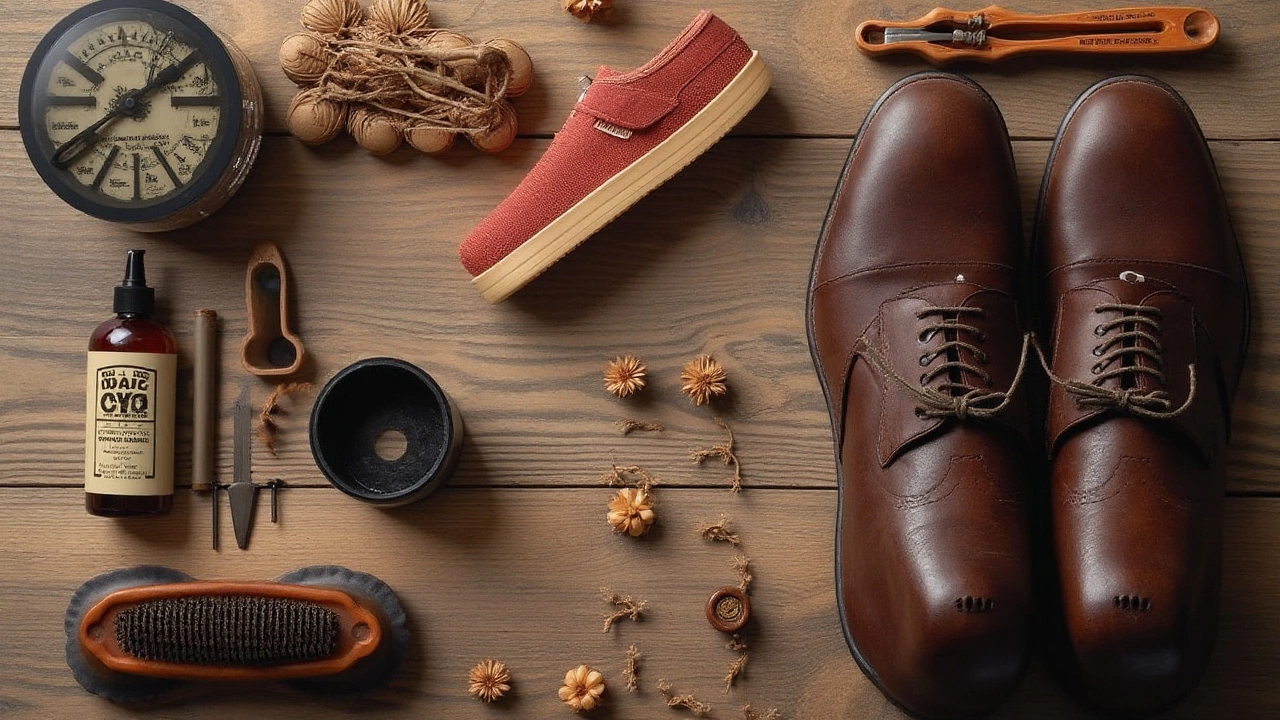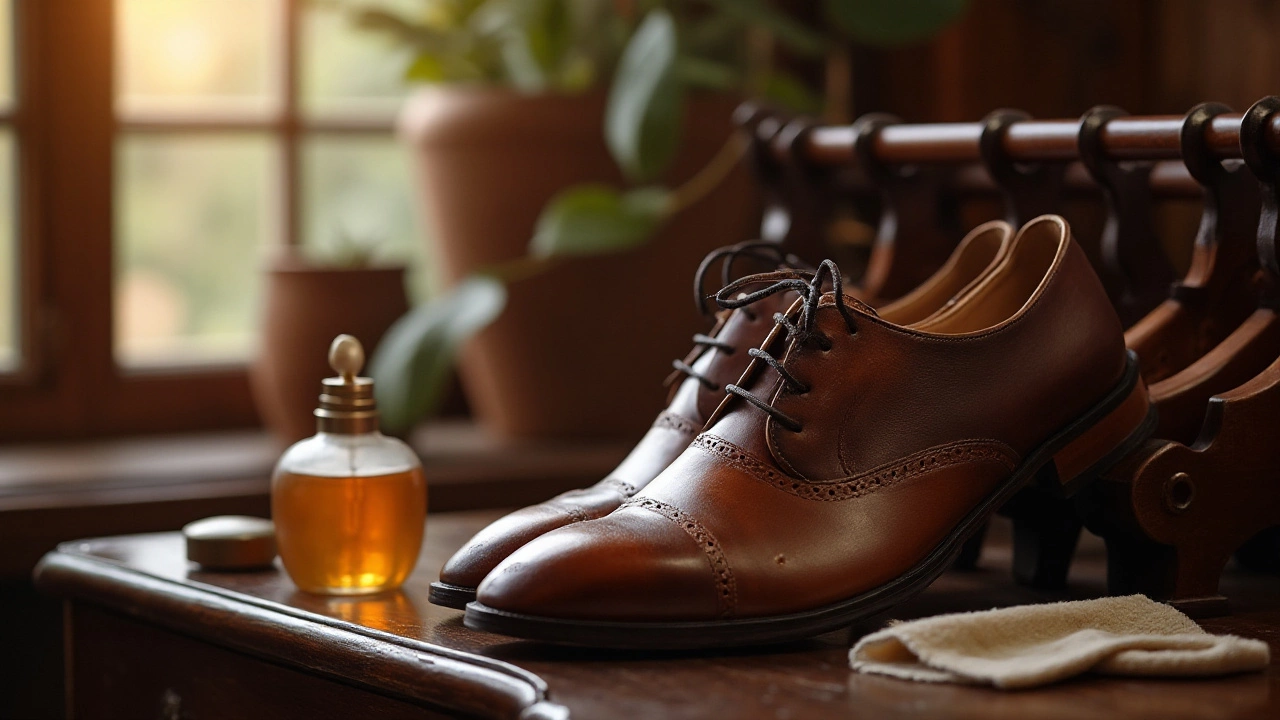Leather shoes have long been a staple in fashion, prized for their durability, style, and timeless appeal. Yet, like all things, they don't last forever. Knowing when to let them go can save you from fashion faux pas and unexpected discomfort.
While the average lifespan of leather shoes can vary based on quality and use, there are common signs that it's time to consider a replacement. Whether it’s deep creases, worn-out soles, or persistent discomfort, these indications are crucial for maintaining your shoe game. But with a few tips and tricks, their life can often be extended.
From daily cleaning to investing in quality leather conditioners, caring for your shoes is as important as the purchase itself. After all, keeping your feet happy ensures each step you take is filled with confidence.
- Understanding the Lifespan of Leather Shoes
- Signs It's Time to Replace Your Leather Shoes
- Caring for Leather Shoes to Extend Their Life
- Why Timing Matters: The Impact of Worn Out Shoes
Understanding the Lifespan of Leather Shoes
Leather shoes, much like a fine wine, tend to get better with age—up to a point. The lifespan of your leather shoes depends on several factors, primarily the quality of materials, craftsmanship, and how often you wear them. High-quality leather shoes can potentially last anywhere from five to ten years or even longer if they are well-cared for. However, those crafted with lesser quality leather or synthetic materials may only offer a couple of good years. It's essential to recognize the nuances of leather, such as full-grain versus corrected grain, as they contribute significantly to durability. Full-grain leather, known for its sturdiness, doesn't just ensure longevity; it develops a distinct patina, adding unique character over time. But even the finest leather will eventually succumb to wear and tear, so proper care and maintenance are vital. Indeed, the longevity of leather footwear isn't merely about the shoe itself, but also about how attentively one tends to them.
Within the realm of shoe maintenance, an intriguing statistic comes from the American Leather Chemists Association, which states that approximately 55% of shoe premature wear happens because of neglect. Regularly conditioning and polishing leather can drastically enhance its lifespan and maintain its aesthetic appeal. A testament to that is the Leonardo Principle which suggests that 'investing in quality is always cheaper in the long run.'
According to Ted Polhemus, a cultural theorist known for his work on style, 'A well-maintained leather shoe is an invitation to be yourself.'Shoes form an integral part of our identity, not just our outfit. Consequently, maintaining their longevity becomes both an economic and a style consideration.
In terms of shoe lifespan, another critical factor is the frequency of use. Rotating leather shoes rather than wearing the same pair daily allows them time to recover from moisture and impact, ultimately elongating their life. There's a significant distinction between the leather’s exposure to sweat and outside elements, which tends to be a critical factor in the aging process. Moreover, if your shoes are exposed consistently to harsh weather conditions without appropriate care, their lifespan will undoubtedly diminish. Even something as simple as using cedar shoe trees can preserve the shoe’s shape and draw out internal moisture, which, although often overlooked, plays a crucial role in prolonging the life of the shoes. With thoughtful care, leather is resilient, and by incorporating simple practices, your favorite pair can serve you well for many years.

Signs It's Time to Replace Your Leather Shoes
The timeless elegance of leather shoes is undeniable, yet even the finest pair will eventually signal that it’s time for a change. One of the first signs that your beloved footwear might be nearing the end of their journey is the appearance of deep creases across the upper section of the shoe. These creases may not only indicate wear but also suggest that the leather has begun losing its flexibility and resilience. If the creases become pronounced and start to disrupt the shoe’s aesthetic, it might be time to consider an upgrade. It’s common for these creases to develop where your foot naturally bends, but when they deepen significantly, the structural damage often follows, impacting the overall comfort and appearance.
Another critical indicator of a shoe’s lifecycle is the condition of the soles. You might notice that the soles start to thin or flatten, especially on those trusty pairs you’ve worn too many times on your daily commute. When the integrity of the sole is compromised, it not only affects the shoe’s grip and your stability but also introduces uneven wear that can lead to discomfort or even injury. Regularly inspect your shoes for signs of separation between the upper and the sole. If you feel like you’re walking with a slant or if any part of the upper is detaching from the sole, these are clear signals that a replacement should be considered.
Furthermore, pay attention to the heels of your leather shoes. Heel wear is common, yet when one side wears down faster than the other, it may interfere with your gait and make walking uncomfortable. For some, this can lead to backaches or knee pain. Examine the heel counter, the firm part at the back of your shoe that provides support. Should it feel soft or lose its shape, your shoes may no longer offer the support you need. In such cases, the heels could be repaired but often it signifies time for a new pair.
The color and surface texture of your leather shoes can also reveal much about their condition. Hidden under a desk or beneath jeans for much of the day, subtle fading or discoloration might not catch your eye, but these are significant alarms. Once vivid hues begin to dim or if the leather shows blotchiness and dullness despite consistent cleaning and polishing, the wear is irreversible. Discoloration might mean that the shoe’s leather treatment is wearing off, exposing it more to environmental elements and thus speeding degeneration.
"Shoes transform your body language and attitude. They lift you physically and emotionally," said Christian Louboutin, renowned shoe designer. This sentiment underscores the importance of not only the style factor of leather shoes but also their role in how you project yourself.-If you notice a persistent odor emanating from the shoes, despite scrupulous care and consistent airing, it’s a telltale sign the insides may have harbored too much moisture and bacterial growth, often driving a nail into the coffins of well-loved pairs. No longer able to maintain hygiene and freshness, it's wise to invest in new shoes to ensure continued well-being.
Keep an eye on fitting as well—fit can deteriorate with time as the cork insoles and upper leather lose their initial structure. If your heels slip out, your toes feel cramped, or if you need to readjust more often than not for a comfortable fit, the insidious signs of shoe lifespan expiration might be upon you. Remember, well-maintained leather shoes should cradle the foot snugly without pressing or chafing.
A critical part of your wardrobe, leather shoes deserve attention and, at times, a well-deserved retirement. Recognizing these signs not only allows for a more seamless transition to new footwear but also ensures that every step you take is one of style, comfort, and confidence. Paying attention to these signals will help fashion-conscious individuals maintain appearances while providing necessary care for the beloved leather companions that walk with them through life’s journey. After all, shoes tell more than just miles; they narrate stories of personal style and unforgettable journeys.

Caring for Leather Shoes to Extend Their Life
Keeping your leather shoes in pristine condition requires attention, but it's a rewarding endeavor. These shoes are not just footwear; they are an investment, a part of your style statement. To make them last, the first step is understanding that routine is key. Leather, while durable, is porous and can change shape and color without proper care. Regular cleaning is essential. Start by removing dirt and debris. This might seem trivial, but pollutants and grime can embed themselves in the leather's surface, causing gradual damage. Use a soft-bristled brush to gently sweep away any lingering particles.
Moisturizing is as important for leather as it is for skin. Applying a high-quality shoe cream or leather conditioner can keep your shoes nourished. These products penetrate the leather fibers, providing essential oils that replenish and restore the material's natural luster. Aim to condition your shoes monthly, though the frequency may increase depending on your climate and usage.
Weather can be the bane of a leather shoe's existence. Rain-soaked streets and snowy walkways are no friend to these stylish companions. Waterproofing is not just advisable, it's non-negotiable. Look for a reputable weatherproofing spray designed specifically for leather. Apply this sparingly, and allow it to dry naturally, creating an invisible barrier against the elements.
"Good shoes take you good places." This saying by fashion icon Seo Min made an indelible mark in the world of style, emphasizing the value of well-maintained footwear.
Storage often goes overlooked in shoe care routines, yet it holds tremendous importance. Keep leather shoes away from direct sunlight and heat sources, as these can cause fading and cracking. Using cedar shoe trees is highly recommended. Not only do they help your shoes maintain their shape, but they also absorb moisture and odors, preserving your investment even when not in use.
Deep cleaning should be done on a slightly less regular basis, but it's a critical aspect of extending the lifespan of your shoes. Remove the laces, wipe down with a damp cloth, and allow them to dry before applying polish. A good quality polish reflects the leather's natural shade, enhancing its appeal while adding a protective top layer against scratches and scuffs. Take the time to buff the surface with a cloth, akin to shoeshine pros. It's about more than aesthetics; it's about love and care for your well-worn friends. Consider using paste wax or cream products for added shine that catches the light beautifully.
In a world that often emphasizes style over substance, let these timeless tips give your leather shoes both. By combining regular care with understanding their needs, you'll not just add years to your shoes, but preserve a reliable partner that supports every footstep in your journey.

Why Timing Matters: The Impact of Worn Out Shoes
Stepping out in a pair of worn-out leather shoes doesn't just affect your appearance, but it can have tangible effects on your overall well-being and even your wallet. As the fashion experts often say, shoes are the foundation of an outfit. Beyond aesthetics, the integrity of your shoes directly impacts the health of your feet. The cushioning in a shoe wears down over time, compromising the support your feet rely on with each stride. This degradation can lead to discomfort, blisters, or even serious foot conditions like plantar fasciitis. When the soles are no longer able to absorb shock effectively, the impact travels up your legs, potentially affecting your joints and back.
In the professional realm, arriving with scuffed and shabby footwear could cast an unintended impression. It subtly signals neglect and can accidentally overshadow the rest of your carefully curated look. According to a survey by the Society for Personality and Social Psychology, nearly 90% of first impressions are formed within a few seconds of meeting someone, and shoes can make up a sizeable portion of that impression. It's a simple detail, yet significantly influential.
There's an environmental consideration, too. Replacing shoes prematurely contributes not only to personal expense but also to environmental waste. By knowing when to let go, you demonstrate a commitment to sustainability, ensuring that each pair fulfilled its life potential before making way for a new set. Doubling the lifespan of your shoes through proper care cuts down your consumption, translating to fewer pairs ending up in landfills.
Timing the disposal of your shoes also taps into economic sensibility. While investing in quality pieces initially might seem extravagant, the long-term benefits in terms of durability and wearability make economic sense. A shoe that lasts longer without requiring replacement reduces the cost per wear significantly over time. As the famed cobbler Salvatore Ferragamo once noted, "Investing in a good pair of shoes saves both time and money, while respecting both your body and the art of craftsmanship."
An old proverb rightly says, "A stitch in time saves nine," which underscores the importance of timely replacements and maintenance to prevent larger impacts.
Finally, staying attuned to your shoe's condition advocates for personal empowerment. Knowing when your trusted pair of leather shoes has given its all allows you to stride with confidence and poise. It ensures that you're always putting your best foot forward, literally and figuratively, adapting to new seasons in life with style and assurance. Recognizing these moments is as much about honoring the history of well-worn shoes as it is about welcoming fresh opportunities.
